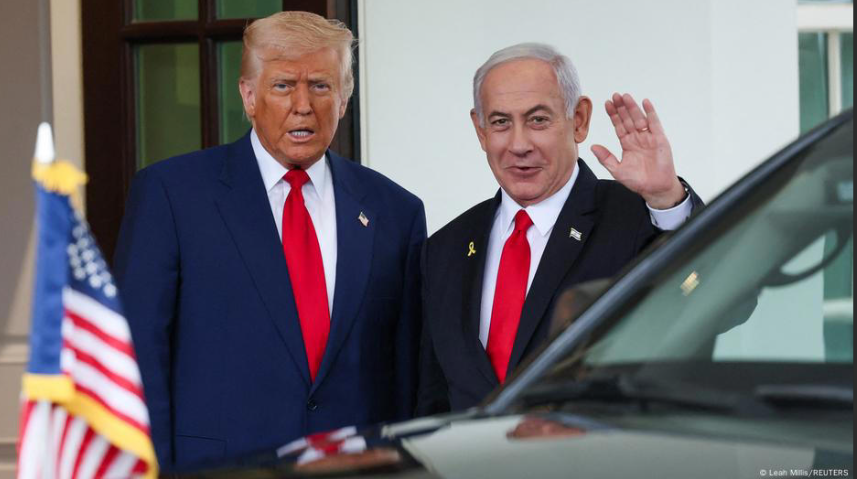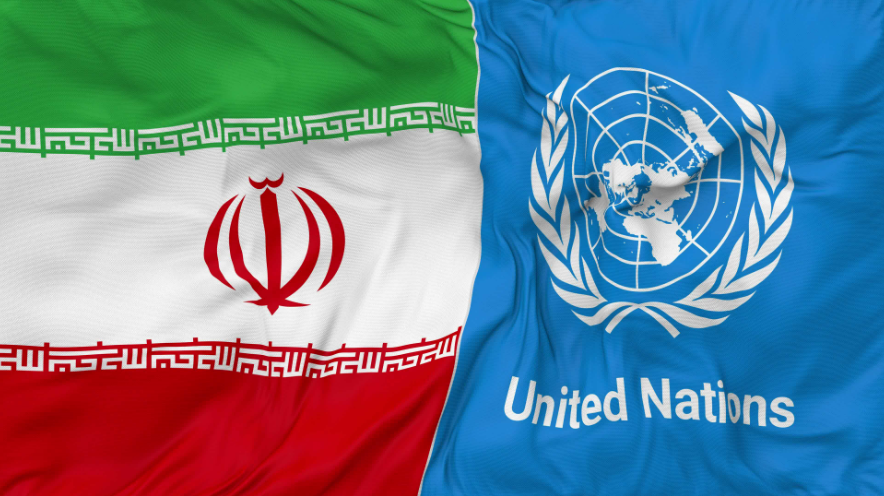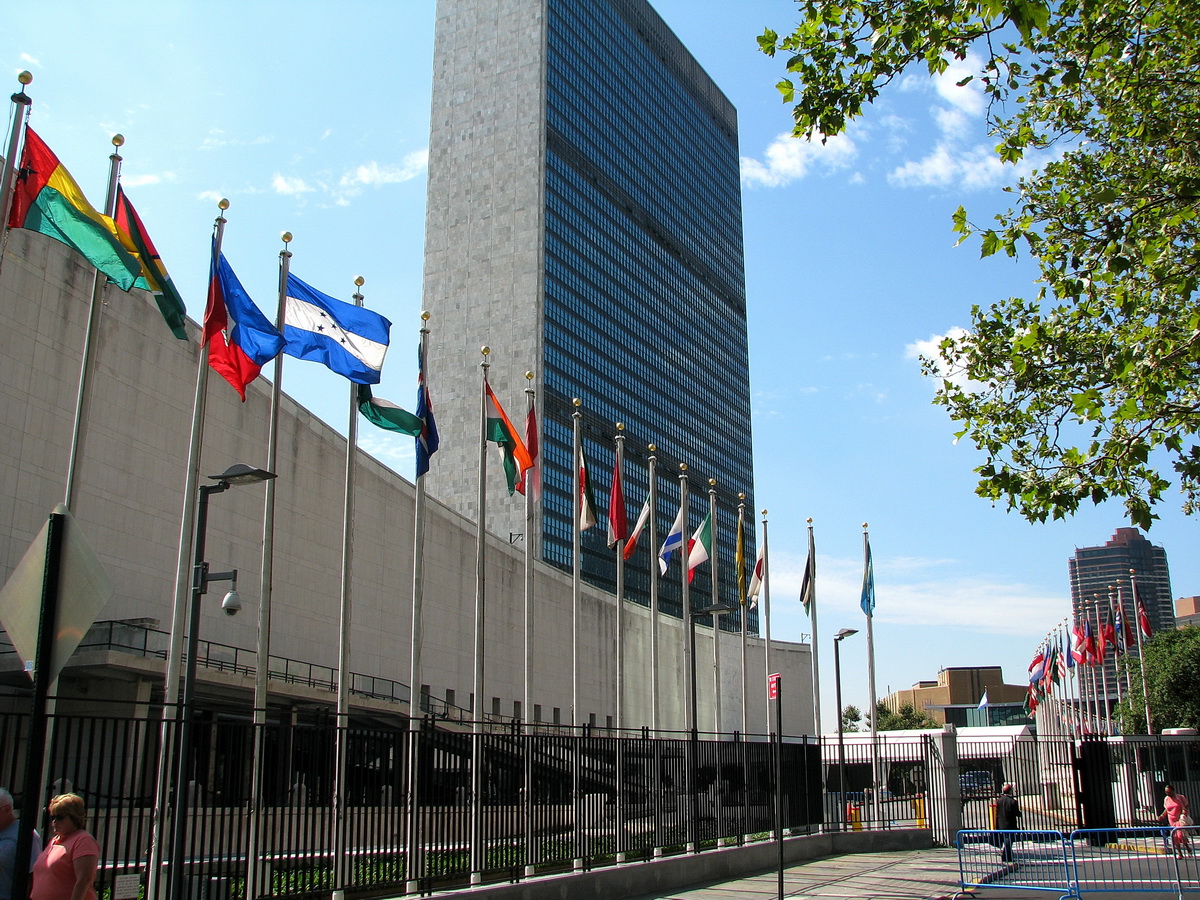Picture above: Iran’s army naval forces fire a ground-to-sea missile in the Sea of Oman, near Jask, southern Iran.
By GREG ROSE and ANTHONY BERGIN. Gregory Rose is a professor of international law at the University of Wollongong and Research Director at thinc.. Anthony Bergin is a senior fellow at Strategic Analysis Australia.
In a puppet play, the puppet master pulls the strings.
Today’s international performance is one that Iran has produced after years of masterful financing, scripting, casting, practising, and propagandising.
The characters are Iran’s proxy networks: the Houthis in Yemen, Hezbollah in Lebanon, Hamas and Islamic Jihad in Gaza and the West Bank, and various militia extras in Iraq and Syria.
The plot is simple, but compelling: destroy Israel and its Jewish cabal, dominate the Middle East, expel the US from the region, and spread revolution beyond. It’s set in an era of a clash between civilisations: Islamist totalitarianism and Western liberal democracy.
This raises the question: how is the Islamic Republic of Iran to be rewarded for its efforts?
Iran is on the offensive. But a coterie of the most powerful leaders of the free world in Washington lacks the political will to confront Iran. Those who suggest that it’s too great a challenge for Western democracies to confront include William Burns (CIA), Avril Haines (national intelligence), Jake Sullivan (national security) and even, it appears, President Joe Biden.
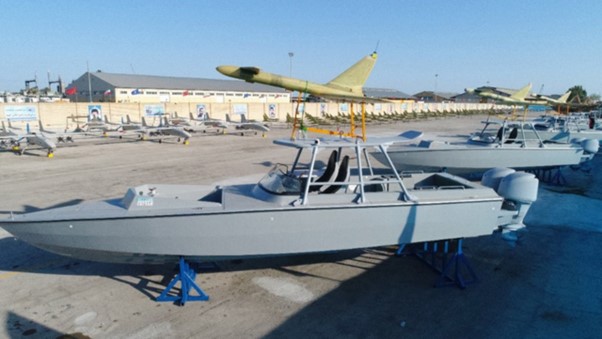
Iran’s Revolutionary Guard Corps (IRGC) displays speed boats carrying droness. Picture: AFP.
READ MORE: US Navy rebuffs new Red Sea air attack | Iran sends warship amid Houthi attacks | Iran has crossed line in conflict | Iran’s handiwork behind all the trouble we are seeing | US kills Iran-backed rebels, sinks boats |
Nevertheless, the US and its allies have the means to subdue Iran. There are many Iranian weaknesses vulnerable to pressure. These include the resumption of co-ordinated financial sanctions. If there is insufficient international co-operation to make financial sanctions bite, then unilateral military strikes targeted at Iranian assets might have more impact.
An easy target for a covert military operation is the Iranian spy ship the Behshad. It is providing intelligence and weapons support to the Houthi terrorists attacking commercial shipping in the Red Sea. Other vulnerable Iranian maritime targets include Iranian commercial ports and oil terminals — such as Kharg Island and Bandar Abbas, Iran’s main naval base – which could also be disabled. The US might take offline Iran’s submarine base at Jask, 1700km south of Tehran, situated on the Gulf of Oman. Iranian missile production plants – at Bandar Abbas, Isfahan and Mashhad – and launch sites such as at Imam Ali base, Bakhtaran and Sirri island, are sharp tools to blunt Iran’s arsenal.
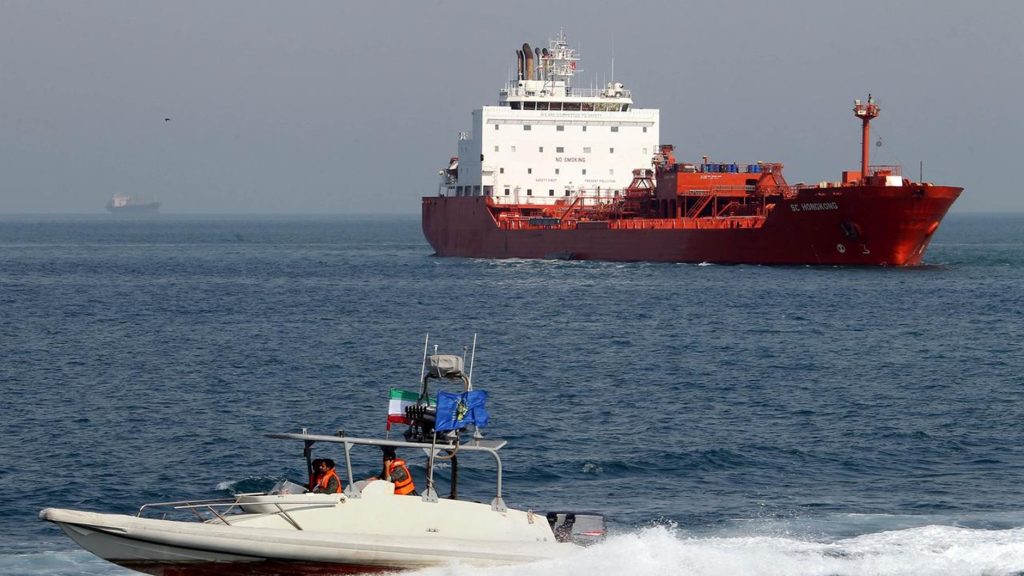
The various headquarters of the Islamic Revolutionary Guard Corps – the Iranian equivalent of the Nazi SS – are well known and shouldn’t be immune.
Most important are the nuclear production plants that Iran has hardened against attack, for example at Arak and Bushehr.
The costs to the West of military action entail risks of regional or global escalation.
Iran could deploy mines and armed submersibles in the Red Sea and Persian Gulf. It could launch attacks by its global terrorist cell network or trigger massive strikes against Israel. China might seize the moment while the free world is preoccupied to invade Taiwan.
Measures to exert maximum pressure against the Islamic Republic will need to be calibrated carefully.
The clock is ticking closer to Iran becoming armed with nuclear weapons of mass destruction. By some estimates it could produce enough weapons grade uranium for a nuclear bomb within a week (and Tehran has never wanted just one bomb). Given this unpredictability, a possible second presidential term for Donald Trump might be an incentive for Iran to declare a nuclear capability before November. Resolve among concerned nations is urgently needed for action against Iran’s nuclear project.
Biden deserves credit for deploying two US aircraft carriers in the eastern Mediterranean, although the USS Gerald R. Ford aircraft carrier strike group will leave there in the coming days to return to its home port of Norfolk, Virginia.
An international fleet for Operation Prosperity Guardian is assembling to protect commercial shipping in the Red Sea. The US giving Israel a green light and providing tacit co-operation for a strike on some Iranian assets might encourage Tehran to pull back.
Other regional assets are poised underwater, in the air, and on the ground in Qatar, Turkey, Saudi Arabia, the United Arab Emirates and Azerbaijan. But they won’t remain in place forever, and it would take time to reassemble them later.
If we want to counter Iran’s goal of controlling the Middle East region, we’ll need to meet this critical challenge now. Iran is an essential support for China and Russia in their manifest strategies against the democratic world.
Will we let Iran’s puppet play end in the feeble decline of Western civilisation or ensure a renewal of democracy’s vital dynamism? There is only one option, really.

